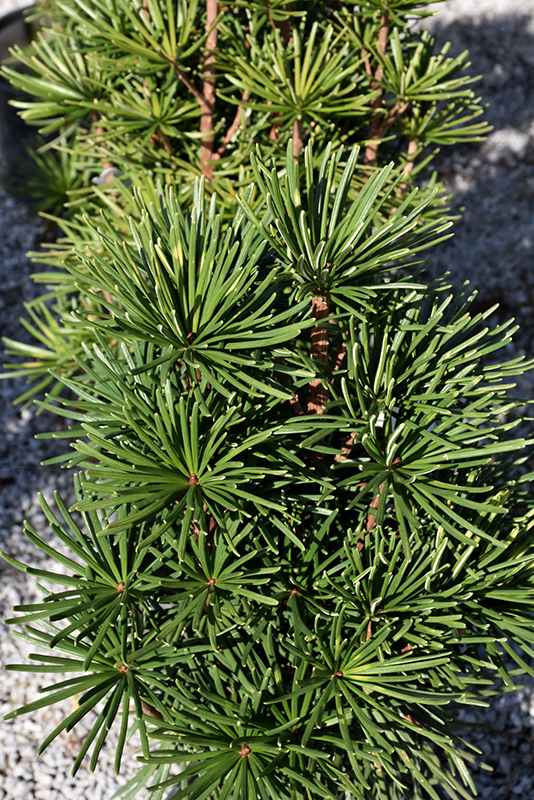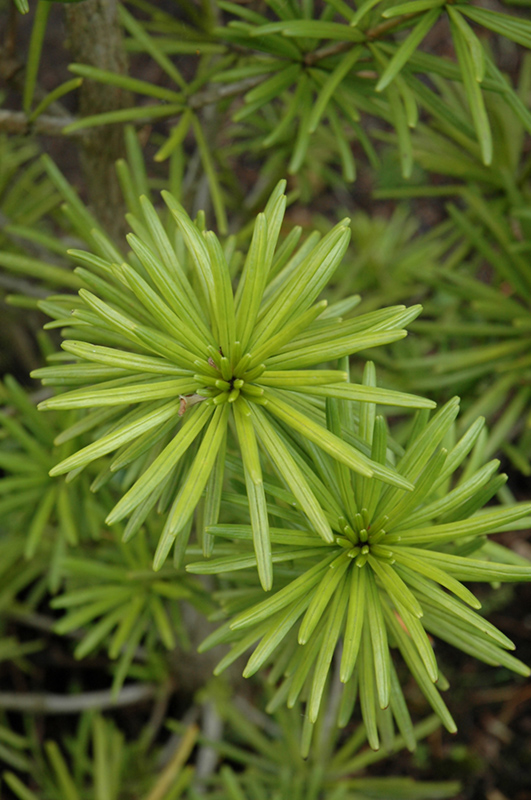Umbrella Pine, Green Star Sciadopitys verticillata 'Green Star' Height: 12 feet Spread: 8 feet
Sunlight:
Hardiness Zone: 4a Other Names: Japanese Umbrella Pine, Koyamaki Description: A compact, slow growing evergreen with a distinctive upright pyramidal shape and green needles that are blunt on the ends making the plant look quite sturdy; a fine choice as an evergreen accent in the garden Ornamental Features Umbrella Pine, Green Star has forest green evergreen foliage which emerges chartreuse in spring on a dwarf conifer with a pyramidal habit of growth. The needles remain forest green throughout the winter. Landscape Attributes Umbrella Pine, Green Star is a dense multi-stemmed evergreen shrub with a distinctive and refined pyramidal form. Its average texture blends into the landscape, but can be balanced by one or two finer or coarser trees or shrubs for an effective composition. This is a relatively low maintenance shrub. When pruning is necessary, it is recommended to only trim back the new growth of the current season, other than to remove any dieback. It has no significant negative characteristics. Umbrella Pine, Green Star is recommended for the following landscape applications; Planting & Growing Umbrella Pine, Green Star will grow to be about 12 feet tall at maturity, with a spread of 8 feet. It has a low canopy with a typical clearance of 1 foot from the ground, and is suitable for planting under power lines. It grows at a slow rate, and under ideal conditions can be expected to live for 60 years or more. This shrub does best in full sun to partial shade. It does best in average to evenly moist conditions, but will not tolerate standing water. This plant should be periodically fertilized throughout the active growing season with a specially-formulated acidic fertilizer. It is particular about its soil conditions, with a strong preference for rich, acidic soils. It is somewhat tolerant of urban pollution, and will benefit from being planted in a relatively sheltered location. This is a selected variety of a species not originally from North America. Umbrella Pine, Green Star makes a fine choice for the outdoor landscape, but it is also well-suited for use in outdoor pots and containers. Its large size and upright habit of growth lend it for use as a solitary accent, or in a composition surrounded by smaller plants around the base and those that spill over the edges. It is even sizeable enough that it can be grown alone in a suitable container. Note that when grown in a container, it may not perform exactly as indicated on the tag - this is to be expected. Also note that when growing plants in outdoor containers and baskets, they may require more frequent waterings than they would in the yard or garden. Special Attributes The cones are an oval and erect on the branches. They are green the first year and ripening to brown the second year. Evergreens need to be watered during the winter. Our desert climate especially in late winter to early spring evergreens can suffer during next growing season. An easy way to remember check for dryness on the holidays Halloween, Thanksgiving, New Year's Day, Valentines Day & Easter.![]()
![]()
![]()
![]()
![]()
![]()
![]()
![]()
![]()
![]()
![]()
![]()



